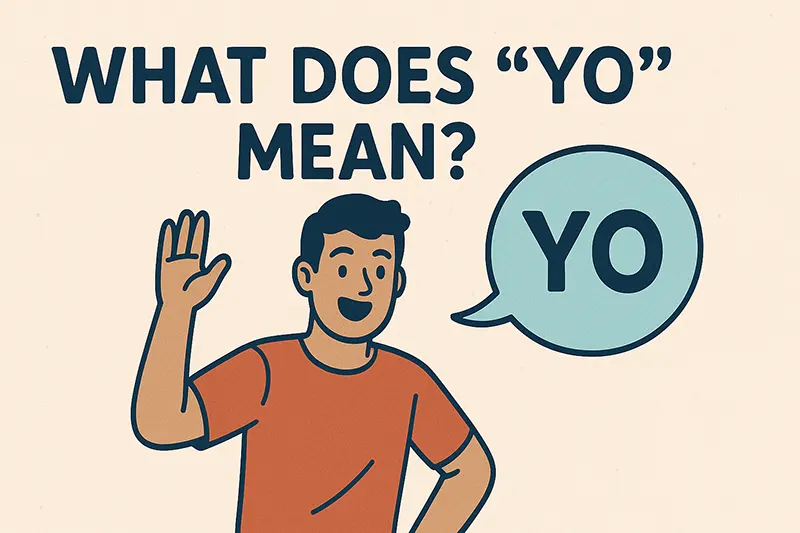“Yo” is a remarkably compact expression whose two letters carry layers of history, identity, and social nuance. Today most English speakers recognize it as the snap‑quick greeting you hear in rap lyrics, on Twitch streams, or shouted across a parking lot: “Yo, what’s up?” Yet beneath that friendly surface lies a story that stretches from seafaring shouts to smartphone notifications.
Street‑level greeting
Modern “yo” took shape in African American English during the early 20th century, probably evolving from longer cries such as “yo‑hoo” and “yo‑heave‑ho,” used by sailors and stevedores to sync their movements. By the 1970s it was firmly embedded in New York’s hip‑hop scene, functioning as the verbal equivalent of a head nod—direct, informal, and slightly defiant. When Yo! MTV Raps debuted in 1988, the word left the boroughs and went global, cementing its link with urban cool.
A discourse marker
Linguists classify “yo” as an attention‑getting interjection or discourse marker. It rarely adds lexical meaning; instead, it frames what follows. Position determines nuance:
- Initial: “Yo, check this out.” (summons the listener)
- Medial: “That track, yo, is wild.” (intensifies a clause)
- Final: “We’re leaving now, yo.” (adds emphasis or solidarity)
Because the word is so short, intonation does the heavy lifting. A rising pitch can soften it into a question, while a clipped fall can make it sound commanding.
Cultural collisions
Coincidentally, “yo” is also the Spanish first‑person pronoun (“I”) and the Japanese sentence‑ending particle よ that adds emphasis. Online spaces often smash these meanings together in playful bilingual memes—“Yo quiero tacos, yo!”—even though the origins are unrelated. The overlap reinforces a broader association with immediacy and personal voice.
The minimalist messaging app
In 2014 the single‑function app Yo briefly ruled tech headlines by letting users ping contacts with nothing but the notification “Yo.” Critics called it peak Silicon‑Valley frivolity, yet its million‑plus downloads proved how much social freight a two‑letter signal can carry. Whether it meant “thinking of you,” “time to go,” or simply “hey,” context filled in the blanks.
Register and etiquette
Because “yo” is informal, it rarely appears in academic prose or legal briefs. Still, marketers chasing Gen Z sprinkle it into slogans (“Yo, new drop just landed”). Use it when casual rapport matters—Slack chats, gaming lobbies, streetwear ads—but skip it in résumés unless you are quoting dialog.
Quick style guide
- Capitalization: Capitalize at sentence start; lowercase elsewhere.
- Punctuation: Follow with a comma when addressing someone (“Yo, Sam”).
- Pronunciation: Single syllable /joʊ/; keep it short to avoid sounding like “yooo.”
Why it endures
“Yo” survives because it accomplishes so much with so little: it grabs attention, signals camaraderie, and injects energy, all in a single syllable. From dockhands yelling across a wharf to streamers greeting thousands online, the word’s core mission is unchanged—cut through the noise and say, in essence, “I’m here; are you listening?”


